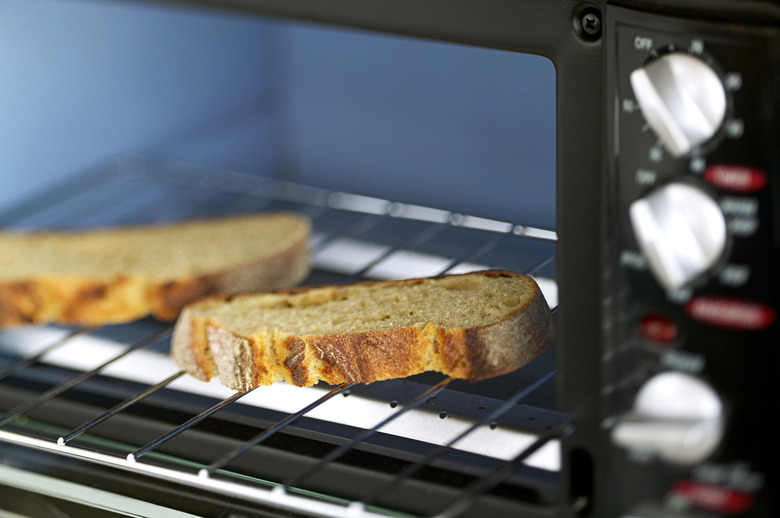How To Fix A Toaster Oven
A toaster oven has much in common with an electric heater, and when your Black and Decker toaster oven won't turn on or your Hamilton Beach toaster oven is not heating, you can approach the repair the same way you would approach a heater repair. If the unit doesn't respond at all, the first step is always to check the power source to make sure a breaker or outlet hasn't tripped. You then test the heating elements, controls and fuses and replace defective ones with parts from the manufacturer or a third-party supplier.
Common Toaster Oven Problems
A toaster oven has the same type of heating elements that you find in an electric heater, and these heat up because of the energy generated by electrical resistance. Some toaster ovens have a knob that controls the current — and with it, the heat generated by the elements. Some have only one current setting, but all have a timer that automatically shuts off the power after a preset time has elapsed. Both the timer and the variable power control can malfunction.
On its way to the heating elements, electricity passes through the main switch to a solenoid, which purpose is to activate the heating elements. This is another part that can malfunction, and when it does, the heating elements may overheat and burn out. Before that happens, however, the toaster oven thermal fuse usually blows. If you're lucky, all you have to do is replace the fuse, but sometimes enough heat has been generated to damage one or more elements or the solenoid, which also then have to be replaced.
Most toaster ovens have one more switch, and it's activated by the door to ensure the toaster oven goes off when someone opens the door. This switch is often a small button in the door frame, and if it malfunctions, the toaster oven might not turn on.
Diagnose Toaster Oven Components
A continuity test determines whether or not electricity can flow through a particular component. To perform a continuity test on toaster oven components, you need an ohmmeter or a multimeter set to measure resistance. As explained by Sparkfun, when you place the leads across a given component, which must be disconnected from power and the rest of the circuitry, a zero resistance reading generally means that the component is good (unless it's a switch in the open position), while a high or infinite resistance reading means it's defective.
If the toaster oven outlet has power, the failure of the toaster oven to come on means either the thermal fuse has blown or the main control switch is defective. You may need to consult the service manual for the toaster oven to locate these components and disconnect them, and after you've done that, a continuity test should tell you which one needs to be replaced.
If the toaster oven comes on, but one or more element doesn't heat up, you can disconnect each malfunctioning element and test it to determine whether or not to replace it. If none of the elements are faulty, test the solenoid and replace it if necessary.
Toaster Oven Not Working — Mechanical Causes
Sometimes, a simple mechanical problem can stop your toaster oven from working. It could be something as innocuous as a crumb caught in the door switch that prevents it from moving or a loose wire connection. You can often diagnose such problems with a thorough visual inspection, although you might have to disassemble the housing to get a closer look. Always remember to unplug the toaster oven before performing any service on it.
